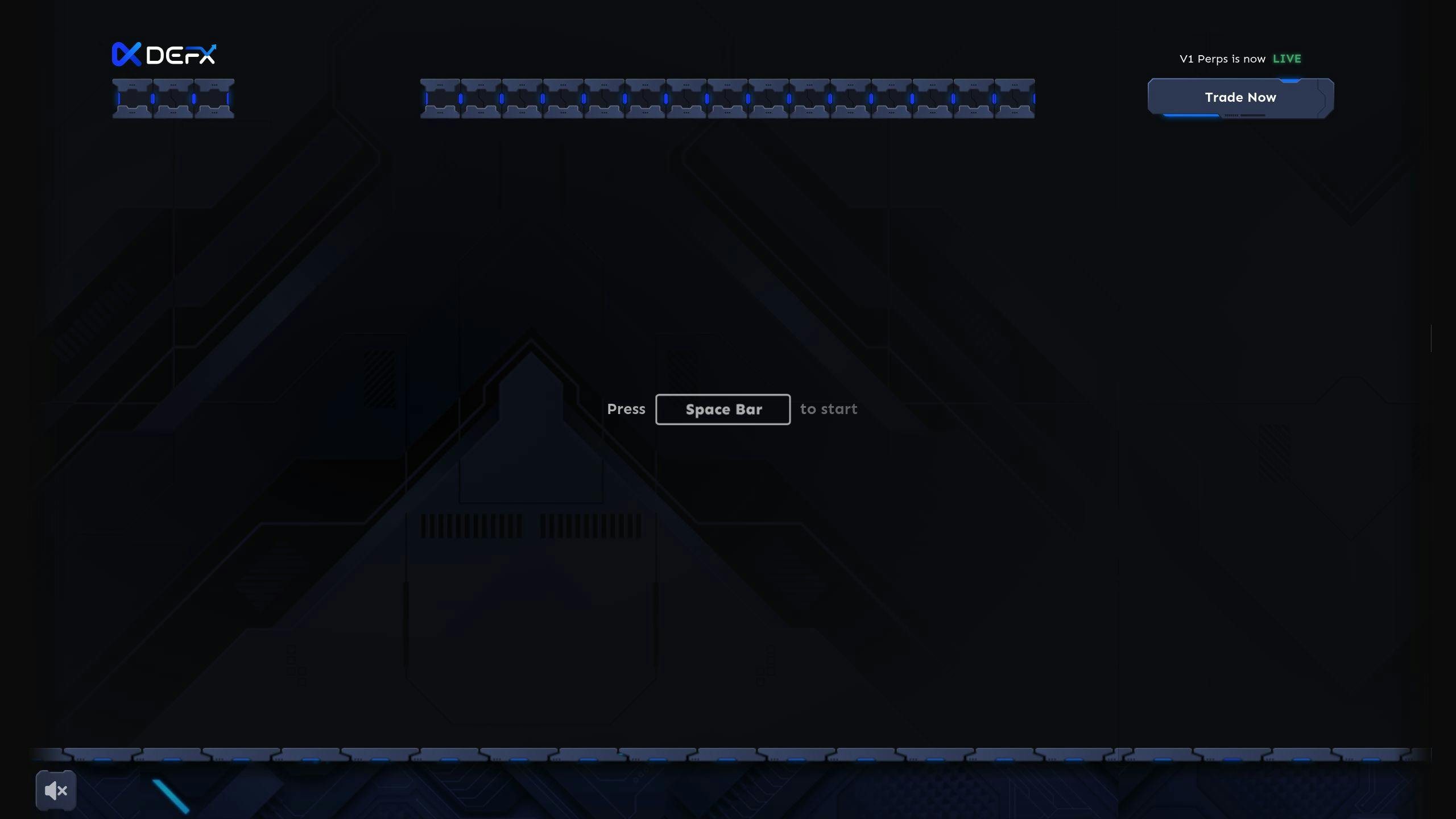High-leverage trading on decentralized exchanges (DEXs) allows traders to amplify their positions using borrowed funds, offering both higher rewards and significant risks. Here’s what you need to know:
- What is it? Use leverage ratios (e.g., 1:50) to control larger positions with smaller deposits. Gains and losses are magnified.
- Benefits: Self-custody of assets, lower fees, and access to DeFi liquidity pools.
- Risks: Amplified losses, market volatility, and liquidation risks.
- Risk Management Tips: Set stop-loss orders, manage position sizes, and monitor your margin closely.
- Top Platforms: DYDX (20x leverage), Mux Network (100x), ApolloX (50x, low fees), Defx (1000x, dual-chain support).
Quick Comparison Table:
| Platform | Max Leverage | Unique Feature |
|---|---|---|
| DYDX | 20x | DeFi integration |
| Mux Network | 100x | Cross-chain trading |
| ApolloX | 50x | Lowest fees |
| Defx | 1000x | Dual-chain support |
To succeed, focus on choosing the right platform, understanding liquidation mechanics, and implementing strict risk controls.
Crypto Leverage Trading on a DEX Tutorial: How to use a Decentralized Exchange
Main Risks in High-Leverage Trading
High-leverage trading on DEXs can offer opportunities for larger gains, but it also comes with serious risks that traders need to manage carefully.
Common Risk Factors
Trading with leverage amplifies both potential profits and losses, making even small price changes impactful. Key risks include loss amplification, market volatility, and liquidation.
| Risk Factor | Impact | How to Mitigate |
|---|---|---|
| Loss Amplification | Increases losses in proportion to leverage | Stick to lower leverage ratios during uncertain markets |
| Market Volatility | Sudden price changes can lead to unexpected losses | Use strict position sizing to limit exposure |
| Liquidation Risk | Entire margin capital can be wiped out | Keep extra margin and set conservative stop-losses |
The cryptocurrency market is known for its unpredictable price swings, which makes these risks even more pronounced. A position that looks secure can quickly turn into a significant loss if the market moves against you.
Understanding how liquidations work on DEXs is a key part of managing these risks effectively.
Understanding DEX Liquidations
Liquidations occur when your margin level drops below the platform’s required threshold. In such cases, smart contracts automatically close your position, returning any leftover collateral after fees. For instance, if you open a 10x leveraged Ethereum trade with a $100 margin and the price drops by 10%, leaving your margin below the 80% threshold, your position would be liquidated, resulting in a $20 loss.
"High leverage increases the risk of liquidation, where adverse price movements automatically close your position." [4]
To reduce the risk of liquidation, focus on these steps: monitor your margin closely, use stop-loss orders, keep extra capital as a buffer, and adjust your leverage based on current market conditions.
Risk Management Methods
Managing risks effectively is essential for high-leverage trading on DEXs. With the right strategies and tools, traders can mitigate potential losses and navigate market volatility more confidently.
Stop-Loss Order Setup
Stop-loss orders act as a safety net to limit losses in high-leverage trading. When setting a stop-loss, take into account both market volatility and your leverage ratio. For instance, if you open a long ETH position at $2,700 with 10x leverage, placing a stop-loss at $2,690 restricts your loss to $100, assuming no slippage [1].
| Stop-Loss Component | Recommendation |
|---|---|
| Price Distance & Leverage | 1-2% from entry; reduce leverage in volatile conditions |
| Position Size | Risk no more than 2% of your account per trade |
Position Size Management
Stop-loss orders protect individual trades, but managing your position size helps safeguard your overall account. Limit your exposure to a fixed percentage of your account balance – commonly 1-2% per trade. For example, with a $100 balance and 1:50 leverage, keeping your position size at $1,000 reduces the risk of over-leveraging [1].
"High leverage increases the risk of liquidation, where price drops automatically close your position. Managing position sizes effectively is crucial for long-term trading success." [4]
Margin Types Compared
The type of margin you use significantly impacts how well your positions can withstand market swings. Each margin type has its own strengths and is suited for different trading approaches.
| Margin Type | Best Used For | Risk Profile |
|---|---|---|
| Isolated Margin | Higher-risk trades | Limits risk to a single position |
| Cross Margin | More cautious strategies | Shares margin across positions |
| Portfolio Margin | Complex strategies | Spreads risk across a portfolio |
Platforms like DYDX provide tools such as automated liquidation alerts and real-time margin tracking to help traders stay on top of their risk management [3]. It’s advisable to maintain at least 25% more margin than the platform’s minimum requirement to buffer against sudden market shifts [1].
sbb-itb-dd9e24a
Leading DEX Platforms for Leverage
Top DEX Platforms
Some of the standout decentralized exchanges (DEXs) for leverage trading include DYDX, offering up to 20x leverage with integrated DeFi features, Mux Network, which supports 100x leverage and cross-chain trading, and ApolloX, recognized for its low fees (0.02% maker, 0.07% taker). These platforms bring unique features that can influence your trading strategy and risk management, especially when working with high leverage.
Defx Platform Features

Defx stands out with leverage options as high as 1000x, dual-chain support on Ethereum and Solana, and non-custodial trading for added security. It also boasts fast trade execution and supports both isolated and cross-margin trading, making it a versatile choice for different trading approaches.
DEX Platform Comparison
Here’s a quick comparison of major DEX platforms for leverage trading:
| Platform | Max Leverage | Unique Feature |
|---|---|---|
| DYDX | 20x | DeFi integration |
| Mux Network | 100x | Cross-chain trading |
| ApolloX | 50x | Lowest fees |
| Defx | 1000x | Dual-chain support |
Each platform caters to different trading needs. DYDX is ideal for those preferring moderate leverage with strong DeFi tools, while Defx appeals to traders looking for the highest leverage options. Mux Network strikes a balance with its cross-chain capabilities, and ApolloX is a go-to for fee-conscious traders [1][3].
Choosing the right platform depends on your trading style and risk appetite, which we’ll explore further in the next section.
How to Choose a DEX
Picking the right decentralized exchange (DEX) is essential for refining your high-leverage trading approach and managing risks effectively.
Key Factors to Consider
When evaluating DEXs, security should be at the top of your list. Look for features like smart contract audits, bug bounty programs, and a strong level of community trust.
Trading fees are another critical consideration, as they directly impact your profitability. For example, ApolloX offers a maker fee of 0.02% and a taker fee of 0.07%, showcasing how fee structures can influence your trading outcomes [3].
Liquidity depth is vital for executing large trades without incurring significant slippage. Platforms like Zoomex highlight strong liquidity by supporting over 192 cryptocurrencies in their perpetual contracts [3].
| Factor | Impact on Trading | Example |
|---|---|---|
| Trading Volume | Higher volume ensures price stability | DYDX averages $2B+ daily volume |
| Order Book Depth | Deeper books reduce slippage | Mux Network’s 100x leverage support |
| Asset Support | More pairs mean diverse opportunities | Zoomex’s 192+ cryptocurrencies |
After analyzing platform-specific features, don’t overlook how the underlying blockchain can influence your trading experience.
Blockchain Considerations
Ethereum-based platforms, such as DYDX, are known for their robust security but come with higher gas fees and slower transaction speeds [3].
On the other hand, Solana-based DEXs like Level Finance boast transaction speeds under 400ms, gas fees below $0.01, and leverage up to 50x. However, these platforms may occasionally face network congestion.
For a balanced approach, platforms like Defx offer dual-chain support, letting traders benefit from Ethereum’s security and Solana’s speed. This flexibility allows you to adapt your strategy based on your trading priorities.
Ultimately, choose a platform that aligns with your specific needs. Whether you’re focused on high-frequency trading with quick execution or long-term positions requiring enhanced security, the right DEX can make all the difference [2].
Summary
Trading with high leverage on decentralized exchanges (DEXs) demands a solid understanding of the mechanics involved and a strong focus on managing risks. It’s important for both new and experienced traders to approach this with care to manage potential losses and aim for better returns.
Key Points to Remember
Risk Management Basics
Trading with high leverage calls for strict risk control. This includes using proper position sizing and setting stop-loss orders. If you’re just starting out, using lower leverage ratios like 1:2 or 1:10 can help you learn the ropes while keeping potential losses in check [1].
Choosing the Right Platform
The platform you trade on can make a big difference. Look for one that offers suitable leverage options, strong security, fast transactions, and flexible margin terms. Once you’ve chosen a platform, focus on strategies to avoid liquidation and handle risks wisely.
Avoiding Liquidation
Stay ahead of potential liquidations by keeping enough margin in your account and using well-placed stop-loss orders. Regularly check your positions and stay updated on market conditions to maintain a safer trading approach.
Staying Informed
Follow any regulatory changes that could affect DEX trading to ensure you’re compliant. Understanding how the market works and the unique features of your chosen platform will help you make smarter trading decisions.
